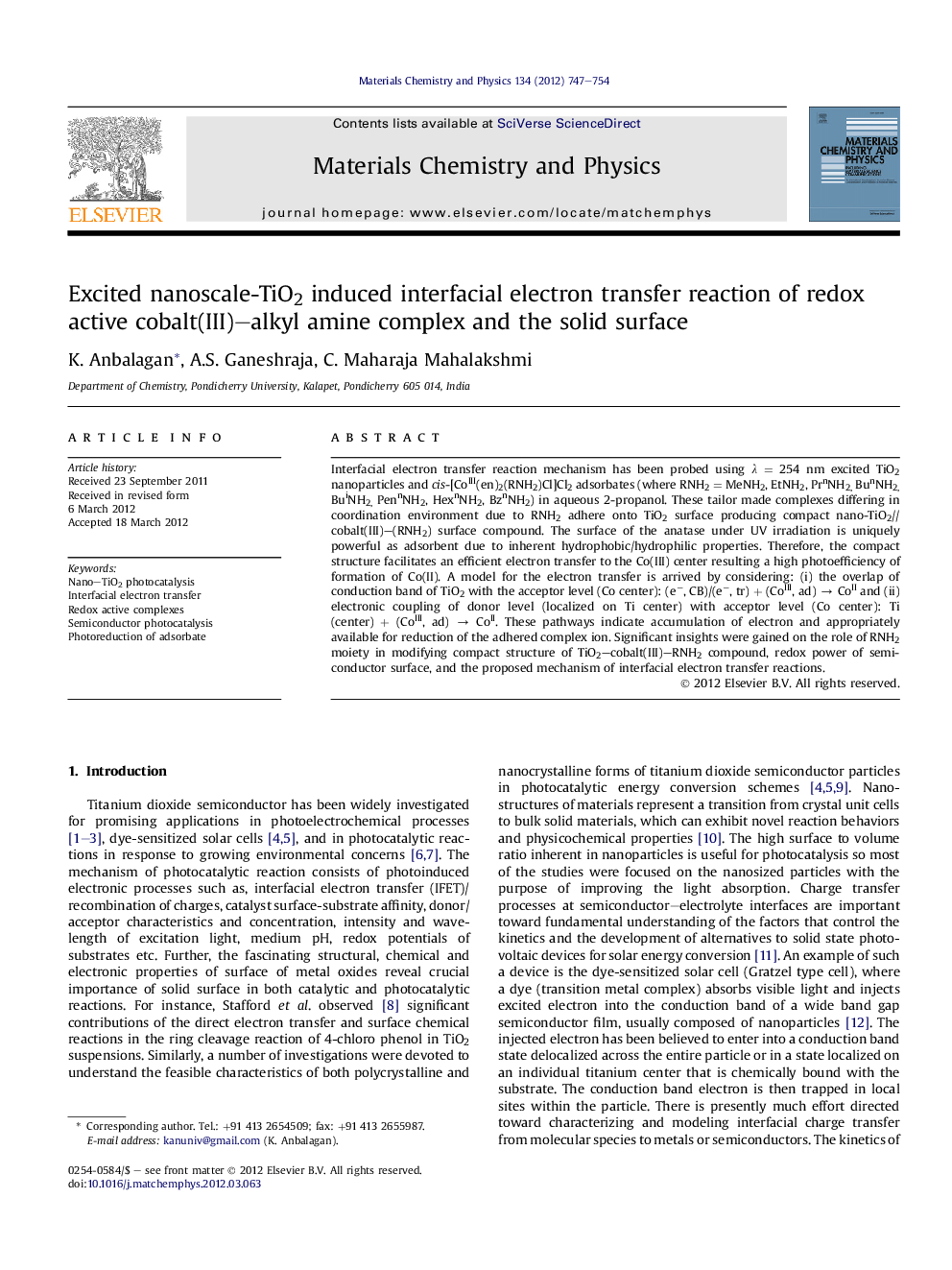| کد مقاله | کد نشریه | سال انتشار | مقاله انگلیسی | نسخه تمام متن |
|---|---|---|---|---|
| 1522985 | 1511826 | 2012 | 8 صفحه PDF | دانلود رایگان |

Interfacial electron transfer reaction mechanism has been probed using λ = 254 nm excited TiO2 nanoparticles and cis-[CoIII(en)2(RNH2)Cl]Cl2 adsorbates (where RNH2 = MeNH2, EtNH2, PrnNH2, BunNH2, BuiNH2, PennNH2, HexnNH2, BznNH2) in aqueous 2-propanol. These tailor made complexes differing in coordination environment due to RNH2 adhere onto TiO2 surface producing compact nano-TiO2//cobalt(III)–(RNH2) surface compound. The surface of the anatase under UV irradiation is uniquely powerful as adsorbent due to inherent hydrophobic/hydrophilic properties. Therefore, the compact structure facilitates an efficient electron transfer to the Co(III) center resulting a high photoefficiency of formation of Co(II). A model for the electron transfer is arrived by considering: (i) the overlap of conduction band of TiO2 with the acceptor level (Co center): (e−, CB)/(e−, tr) + (CoIII, ad) → CoII and (ii) electronic coupling of donor level (localized on Ti center) with acceptor level (Co center): Ti (center) + (CoIII, ad) → CoII. These pathways indicate accumulation of electron and appropriately available for reduction of the adhered complex ion. Significant insights were gained on the role of RNH2 moiety in modifying compact structure of TiO2–cobalt(III)–RNH2 compound, redox power of semiconductor surface, and the proposed mechanism of interfacial electron transfer reactions.
Figure optionsDownload as PowerPoint slideHighlights
► Interfacial electron transfer reactions can be probed with tailor made complexes.
► Excited anatase surface acts as a uniquely powerful adsorbent.
► Structurally integrated cobalt(III) complexes adhere to form surface compounds.
► Compact surface compound can facilitate electron transfer.
Journal: Materials Chemistry and Physics - Volume 134, Issues 2–3, 15 June 2012, Pages 747–754